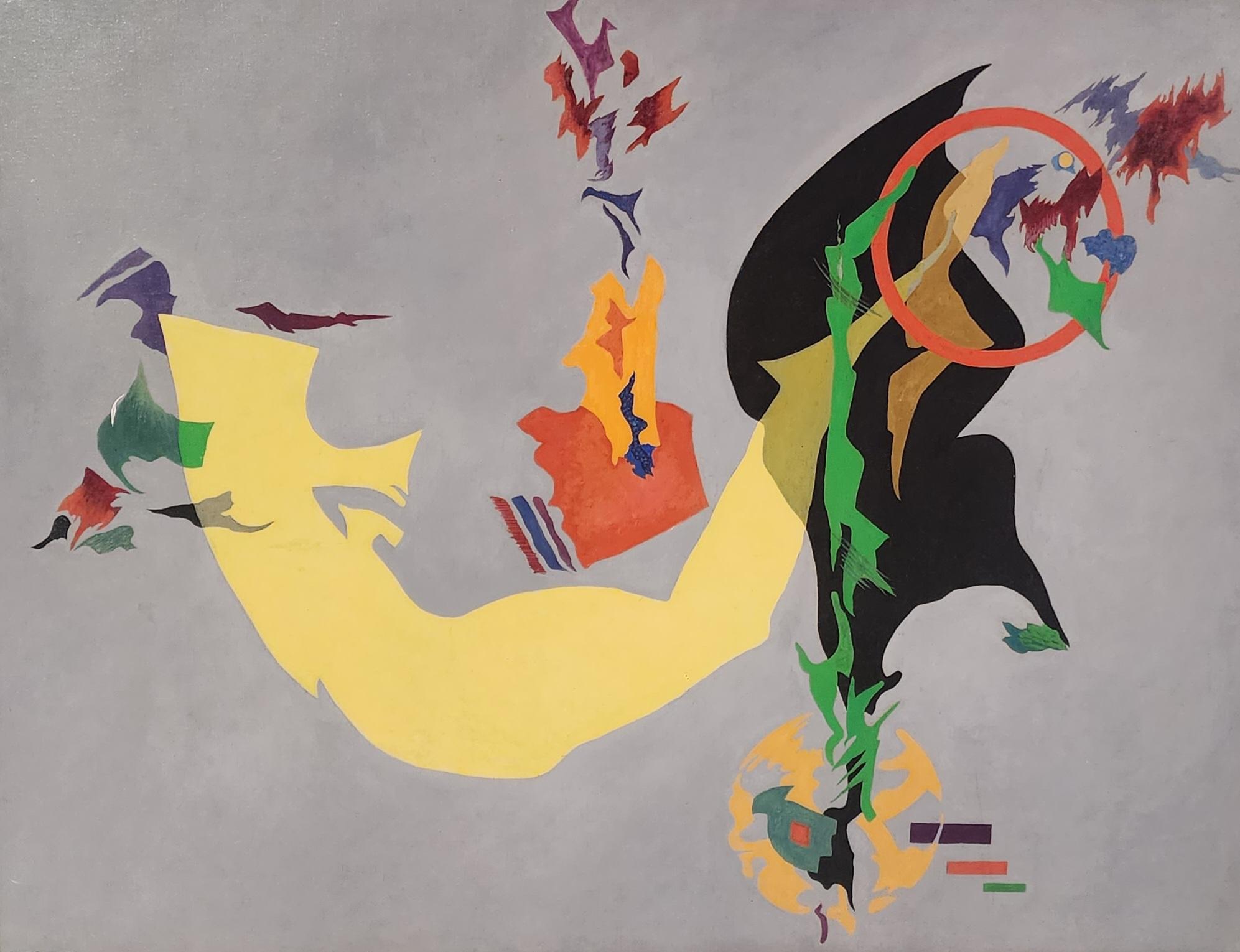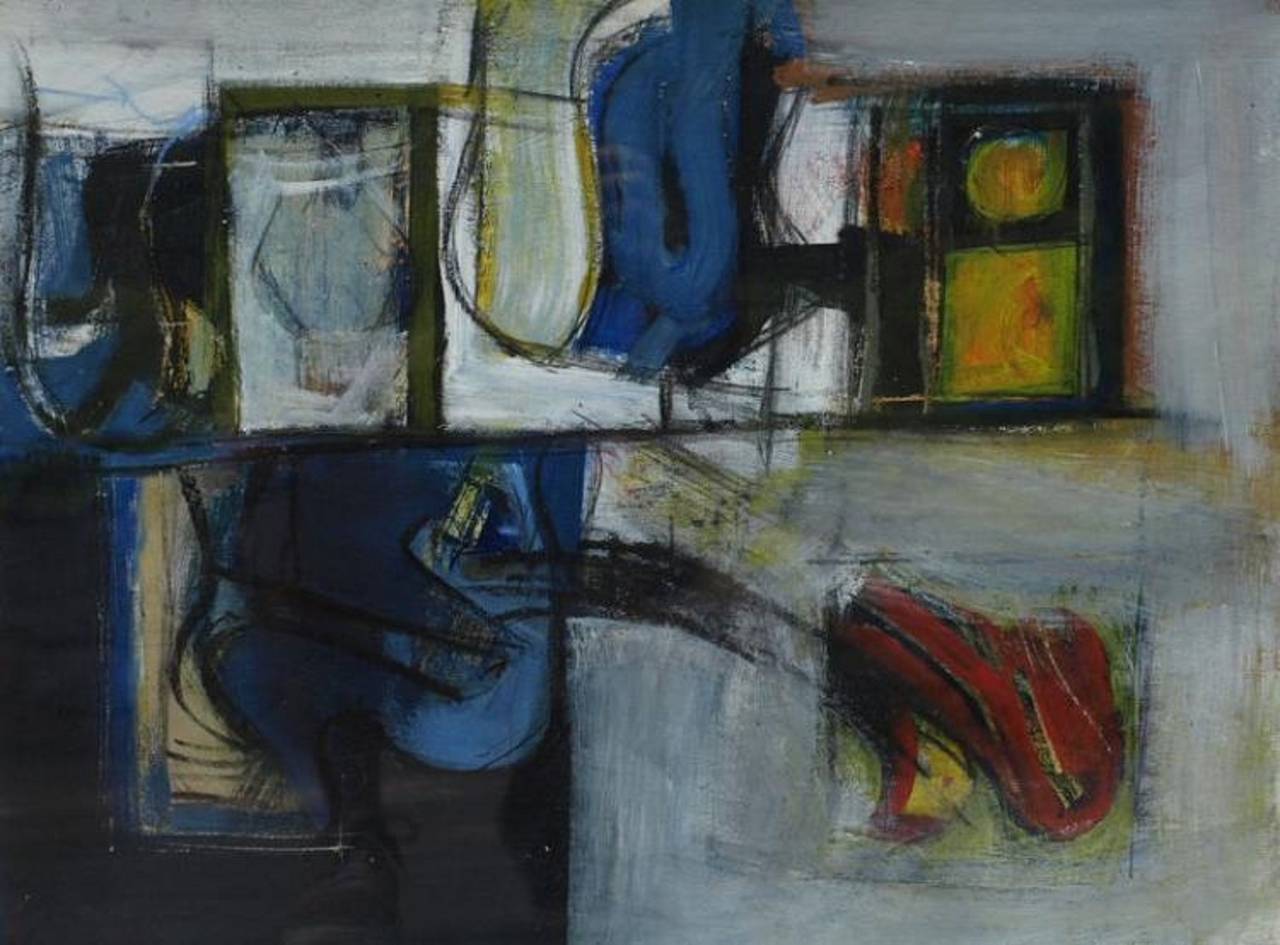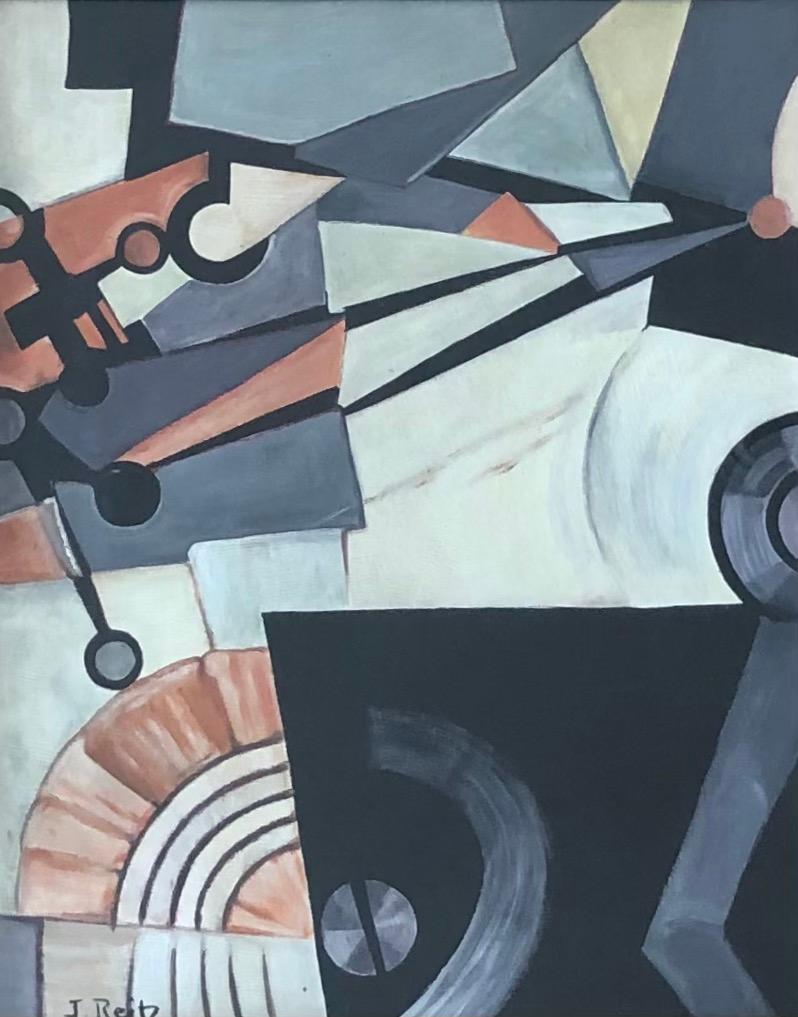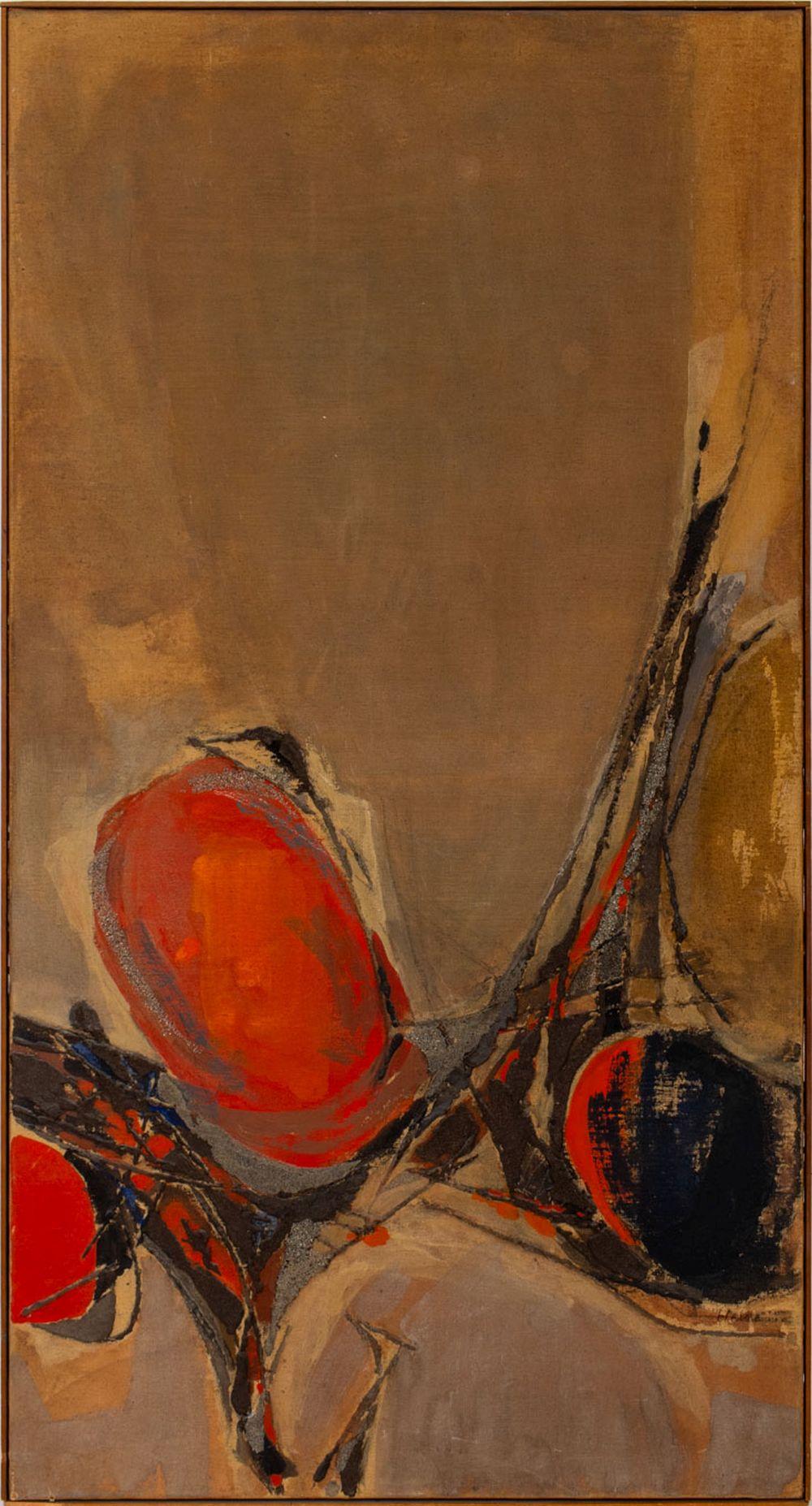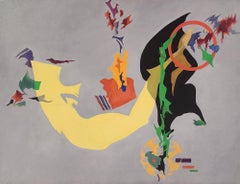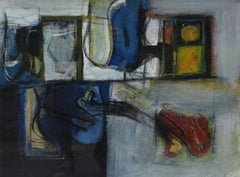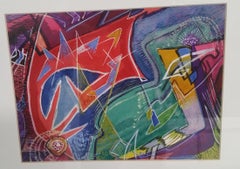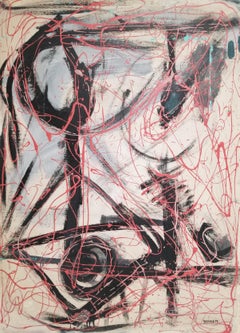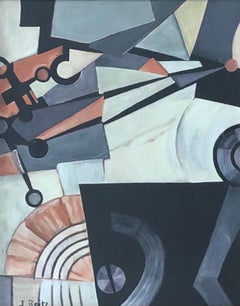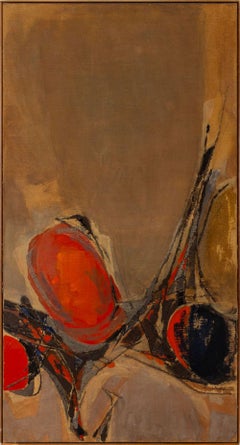Want more images or videos?
Request additional images or videos from the seller
1 of 7
Agnes HartAbstraction
$25,000
£19,526.98
€22,136.17
CA$35,840.30
A$39,314.85
CHF 20,570.14
MX$467,925
NOK 259,813.41
SEK 243,709.62
DKK 165,325.27
About the Item
Signed lower right
Agnes Hart was born in Meridan, Connecticut. She studied at the Ringling School of Art in Sarasota, Florida; at Iowa State University with Josef Presser, Paul Burlin and Lucile Blanch, and printmaking with Reginald Neal.
One-Woman Exhibits: the Roko Gallery in 1949. Woodstock, New York 1951, 1955, 1959, 1963, 1972; Mercer University in Georgia 1962; presentation show at Woodstock Artists Association 1953; Coral Gables, FL 1973.
Group Exhibitions: Metropolitan Museum of Art, "American Painting Today" 1950; Art USA 1958; Brooklyn Museum; Pennsylvania Academy of Fine Arts; Philadelphia Art Alliance; Virginia Academy of Fine Arts; Toledo Museum; Springfield Museum; Chicago Art Institute; Butler Art Institute; National Academy of Design; Riverside Museum; New York Cultural Center; Long Island University; Berkshire Art Association; Eight at Phoenix Galleries; Galerie Interieur in Zurich, Switzerland.
Collections: Metropolitan Museum of Art; Norfolk Museum; Wichita State University. Instructor : Art Students League 1965 - ; Dalton Schools; Birch Wathen School; Anna Maria School in Florida; Parnassus Square in Woodstock; Children's Workshop and Guild of Craftsmen in Woodstock.
Awards : Guest painter at Yaddo at Saratoga Springs 1948, 1949; Yasuo Kuniyoshi Fund Memorial Award 1972; ASCA Award 1976.
Published in Art for the Millions, 1973; New Deal for Art 1977; New York Works Progress Adminstration Artists, Then & Now 1977.
Biography from Butler Institute of American Art
About the Seller
4.2
Vetted Professional Seller
Every seller passes strict standards for authenticity and reliability
Established in 1992
1stDibs seller since 2015
32 sales on 1stDibs
Typical response time: 16 hours
- ShippingRetrieving quote...Shipping from: Saratoga Springs, NY
- Return Policy
More From This Seller
View AllUntitled
By Rolph Scarlett
Located in Saratoga Springs, NY
Signed lower left.
This is a large example of a non-objective painting by Rolph Scarlett. Scarlett was a painter of geometric forms and shapes. His intuitive style helped establish ...
Category
Mid-20th Century Abstract Abstract Paintings
Materials
Canvas, Oil
$50,000
Abstract
By Harry Nadler
Located in Saratoga Springs, NY
Singed verso.
An abstract painter who lived in New York City; Amagansett, Long Island, and Albuquerque, New Mexico, Harry Nadler is described as a "formalist abstract painter of t...
Category
Abstract Abstract Paintings
Materials
Archival Paper, Mixed Media
$4,500
Abstract
By Rolph Scarlett
Located in Saratoga Springs, NY
Rolph Scarlett (Canadian/American, 1889 - 1984)
“Abstract”
Signed and dated 1947, lower right
Gouache on paper
Provenance: Private collection, Miami Florida
About
Rolph Scarlett w...
Category
1940s Abstract Abstract Paintings
Materials
Gouache
Abstract
By Rolph Scarlett
Located in Saratoga Springs, NY
Signed lower right and a double sided painting.
Category
Mid-20th Century Abstract Expressionist Abstract Paintings
Materials
Oil, Board
$35,000
The Fern
By Agnes Hart
Located in Saratoga Springs, NY
Signed lower right
Agnes Hart was born in Meridan, Connecticut. She studied at the Ringling School of Art in Sarasota, Florida; at Iowa State University with Josef Presser, Paul Burlin and Lucile...
Category
1940s Abstract Expressionist Abstract Paintings
Materials
Canvas, Oil
$4,750
Abstract
By Paul Burlin
Located in Saratoga Springs, NY
Signed lower right.
Paul Burlin's abstract works are celebrated for their dynamic use of color and form, often exploring themes of spatial infinity and emotional expression. You will see in this painting a showcase of harmonious blend of angular forms and pure colors, creating a sense of openness and serenity
Born in New York City, Paul Berlin...
Category
1960s Abstract Expressionist Paintings
Materials
Oil
$20,000
You May Also Like
Untitled Abstraction
By Rolph Scarlett
Located in Summit, NJ
Gouache on paper by Rolph Scarlett c. 1950s. The piece is signed "Scarlett" on the front in two places. The piece is in perfect condition. Unframed it measures 10.75 x 13.5.
Category
1950s Abstract Abstract Paintings
Materials
Gouache
$1,400 Sale Price
43% Off
Composition
Located in Genève, GE
Work on cardboard
Beige wooden frame with glass pane
54.5 x 46.5 x 1.5 cm
Category
Mid-20th Century Abstract Abstract Paintings
Materials
Oil
$1,938
Untitled Abstraction
By Rolph Scarlett
Located in Summit, NJ
Gorgeous gouache on paper by Rolph Scarlett c. 1950s. The piece is in perfect condition. Unframed it measures 13.75 high by 16 wide. It is signed "Scarlett" lower right.
Category
1950s Abstract Abstract Paintings
Materials
Gouache
Abstract Composition
Located in Astoria, NY
Marc Heine (German/American, 1919-2007), Abstract Composition, Mixed Media on Canvas, signed lower right, wood frame. Image: 66.25" H x 35.25" W; frame: 67" H x 36" W x 1" D. Provena...
Category
Mid-20th Century Modern Abstract Paintings
Materials
Canvas, Found Objects, Mixed Media, Oil
Abstract composition
Located in Genève, GE
Work on wood
Category
1960s Abstract Abstract Paintings
Materials
Oil
Abstract
By Frederick Conway
Located in New Orleans, LA
Frederick Conway (1900-1973) was a painter, educator, and lecturer. From 1929 to 1970, Conway was a member of the faculty of the Washington University Art School. When Max Beckmann was in residence at Washington University, he and Conway became close associates. Conway was one of the first to realize the importance and seriousness of Beckmann's teaching. In 1949, Beckmann painted Conway's portrait.
Conway was born in Saint Louis, Missouri, and studied at the Saint Louis School of Fine Arts and in Paris at the Academie Julian, the Academy Moderne, and the Academy Grande Chaumiere. He painted murals for the WPA (Works Progress Administration...
Category
1960s Abstract Abstract Paintings
Materials
Oil, Board
More Ways To Browse
Woodstock Artists
Hart Oil Paintings
Saratoga Paintings
Lucile Blanch
Abstract Splatter
Black Impasto Painting
Color Block Painting
Uruguay Art
Green Gold Abstract Art
Josep Grau Garriga
Large Square Painting
Tondo Painting
Korean Abstract Art
Le Cafe
Solar Eclipse
Abstract Rectangles
Fractal Art
Horizontal Abstract Oil Painting
